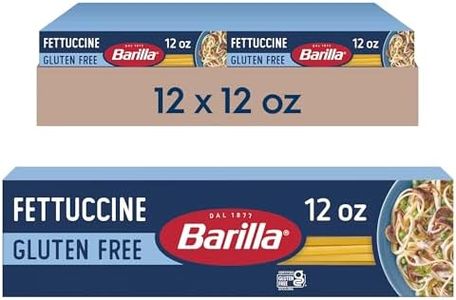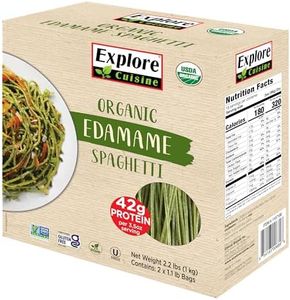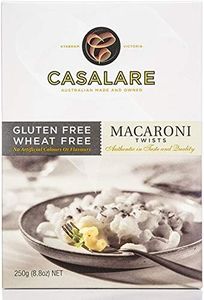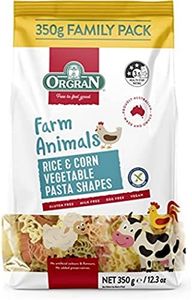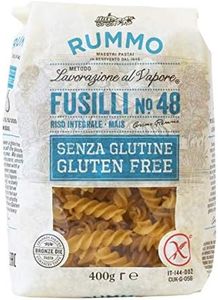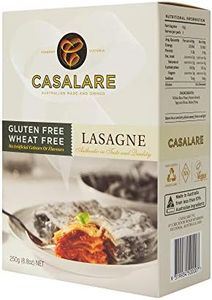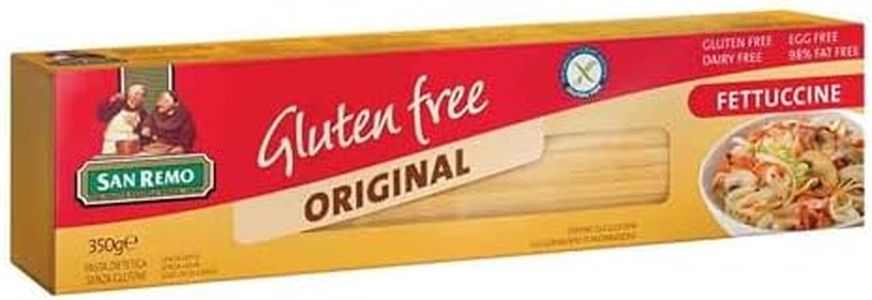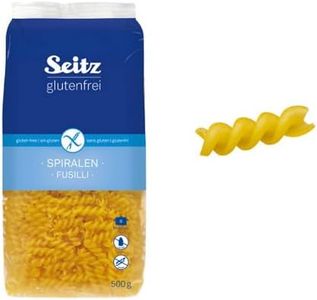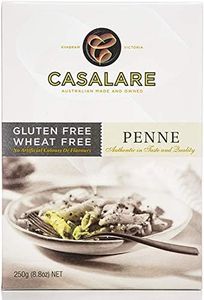We Use CookiesWe use cookies to enhance the security, performance,
functionality and for analytical and promotional activities. By continuing to browse this site you
are agreeing to our privacy policy
10 Best Gluten Free Pastas
From leading brands and best sellers available on the web.By clicking on a link to a third party's website, log data is shared with that third party.
Buying Guide for the Best Gluten Free Pastas
Choosing the right gluten-free pasta involves more than just finding a gluten-free label. It's important to consider your preferences around texture, taste, cooking qualities, and nutritional benefits. Gluten-free pastas are now made from a variety of ingredients, each lending its own unique qualities. By understanding what affects a pasta’s texture, flavor, and nutritional profile, you can find one that not only meets your dietary needs but also fits your taste and cooking style.Main IngredientGluten-free pastas are made from various ingredients such as rice, corn, quinoa, lentils, chickpeas, and more. This spec is important because different ingredients significantly affect the pasta’s texture, flavor, and nutrition. For example, rice and corn pasta generally have a neutral taste and a softer texture, while lentil and chickpea pastas tend to be richer in protein and fiber but can taste earthier and feel firmer. If you prefer pasta closest to traditional wheat pasta, rice or corn-based options are often the most similar. If you're seeking a higher protein or fiber content, bean- or legume-based types may suit you better. Think about your taste preferences and any nutritional goals while choosing.
Texture (After Cooking)Texture refers to how the pasta feels when eaten—firm, soft, chewy, or mushy. This is crucial because some gluten-free pastas turn mushy or fall apart more easily during cooking, affecting the eating experience. Generally, rice and corn pastas tend to soften quickly and may become sticky if overcooked, whereas quinoa or legume pastas often stay firmer. For those wanting a traditional ‘al dente’ bite, quinoa-blends or blended-ingredient pastas are usually better. If you are okay with softer textures, then rice or corn pasta may satisfy you. Consider your preferred pasta dishes, as firmer pastas work well in salads and bakes, while softer ones are good for creamy or broth-based recipes.
Nutritional ContentThe nutrition in gluten-free pastas can differ a lot based on the main ingredient. Some, like rice and corn, are similar to traditional pasta but with less fiber and protein, while lentil, chickpea, or buckwheat pastas can be rich in protein and fiber. If you need more protein for an active lifestyle or more fiber for digestion, choose pastas made from legumes. If you have specific dietary needs, such as lower carbs or higher vitamin content, check the nutrition label to make sure the pasta fits your needs.
Cooking Time and EaseCooking time can vary greatly among gluten-free pastas, and some require more careful attention to avoid overcooking or clumping. Pasta that cooks quickly may be convenient, but some types can turn mushy if left even a minute too long. If you’re new to gluten-free cooking, choosing a pasta known for holding its shape (like certain blends) can be more forgiving. If you often cook in a hurry, opt for pastas with shorter and more forgiving cooking times, but always check the instructions for each type.
FlavorFlavor is how the pasta itself tastes, which can range from mild to earthy or even slightly nutty based on the main ingredient. Rice and corn pastas are usually mild but sometimes have a subtle sweetness. Legume or quinoa pastas have a stronger, sometimes earthier taste. If you like your sauces to be the star, go for neutral-tasting pastas. If you welcome added flavor and want pasta to contribute to the meal, try experimenting with more adventurous choices like chickpea or buckwheat.

